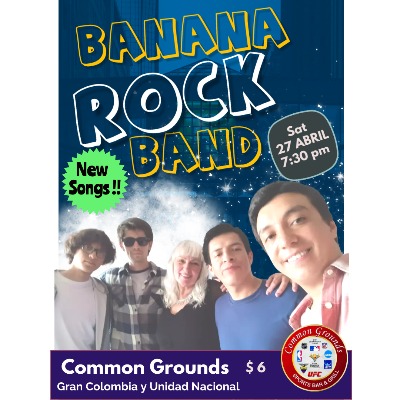Ecuador’s top 10 list: Places to see, things to do
By Ben Westwood
Editor’s note: Ben Westwood, author of the Ecuador Moon Guide, offers a list of his favorite places and activities in Ecuador.
Quito

La Capilla del Hombre in Quito.
Surrounded by Andean peaks, Quito’s setting is enough to make anyone forget their troubles. The Unesco-listed historic, colonial Old Town is a maze of churches, plazas and narrow streets, perfect for getting lost in. Anyone with issues with the corporate multinational machine should make a beeline for the presidential palace – Carondelet Palace – which President Rafael Correa opened up to the public after becoming president in 2007.
North of the Old Town is the Palacio Legislativo. When the government is not in session you can take a guided tour to marvel at the mural depicting the sufferings of indigenous people complete with an evil-looking face wearing a helmet labelled CIA. The fact that the unveiling of the painting in 1988 caused the U.S. ambassador to storm out of the room will be an added attraction for anyone wanting to stick it to The Man. The city tour is completed by visiting the masterwork of the artist Oswaldo Guayasamín (completed following his death in 1999) at La Capilla del Hombre, high above the New Town. The massive dome ceiling is covered in depictions of the indigenous workers who died in the Bolivian mine of Potosí. Other highlights include the gigantic Bull and Condor, symbolising the struggles between Spain and South America, and La Ternura, a tender embrace of a mother and child.
The Llanganati Mountains
In 1532, the conquistadors held Inca leader Atahualpa for ransom, only to execute him before the largest portion of the treasure could arrive. This vast amount of gold and silver was spirited away by Inca porters into the rain-drenched mire of the Llanganati Mountains in Ecuador’s central highlands. Ever since, adventurers have tried to locate it, often with fatal consequences, leading to the legend that the gold and the region that enclosed it were cursed. If you do go in search of treasure, make sure you take a guide, which can be hired in nearby Baños. Alternatively, it’s the ideal place to disappear without a trace.
Stay with Shuar Indians

Shuar warriors in ceremonial dress.
Don’t mess with the Shuar – traditional greetings among men include “I see you’re still alive”. This infamously fierce tribe was the bane of Spanish invaders – they apparently poured molten gold down the throat of a unpopular Spanish governor in 1599 in a gruesome version of poetic justice by satisfying his thirst for gold. Descendants of the Jivaro tribe, split across Ecuador and Peru, the Shuar were performers of the headshrinking ritual, where the lips and eyes of an enemy are sewn shut before the head is shrunk and the soul supposedly destroyed. You can learn about Shuar communities by taking a tour from the southern jungle near the town of Macas. Needless to say, don’t lose your head and attempt to venture into Shuar territory alone. More information on the tourist board website (in Spanish).
Canoa beach town
Montañita is Ecuador’s version of Goa with stoned rastas and tanned surfers transforming this cramped beach town into a hippy haven. Head further north to Canoa, a smaller, more laidback resort with a long beach for a quieter place to ride the waves, sip cocktails and forget your troubles. While the 1998 El Niño shrank the beach at Montañita, it actually grew in Canoa. Stay at Coco Loco or Hotel Bambu.

Canoa beach at sunset.
Ten miles north of Canoa Rio Muchacho is an organic farm producing fruit, vegetables, jams, coffee and chocolate. A one-day tour costs $40pp or stay there for three days ($140pp), ride horses into the forest, catch freshwater shrimp and make your own organic dinner.
Andean adventures
Try out zip-lining in Mindo in the cloud forest two hours north-west of Quito with Mindo Canopy Adventure. Thirteen zip-lines cost $15. Other adventure options include tubing – racing down river rapids sitting in an inflatable tube. Alternatively, head five hours south-east of Quito to tackle whitewater rafting in the jungle town of Tena. British-run River People and Quito-based Rios Ecuador are good local operators. The river Misahualli is the most tempestuous (Class IV), and certainly not for the faint-hearted.
Floreana, Galápagos Islands
While Ecuador beat off half-hearted claims from the U.S. and Britain to claim the Galápagos in 1832, the developed world has still left an indelible mark here. The U.S. navy used Baltra as an air base in the second world war and used the famous Pinnacle Rock for target practice. A lesser known chapter of history is the series of strange disappearances among a small German community on the island of Floreana in the 1930s. A baroness arrived on the island with three lovers and quickly ruffled feathers with her eccentric antics. She and her lover suddenly disappeared one night and both of the chief suspects ended up dead in the next few months. To delve deeper into this cold case, stay at the Pension Wittmer on Floreana, run by the son of an original settler, Margaret Wittmer. The hotel has bungalows overlooking the beach from $40pp. Floreana itself is the oldest inhabited Galápagos island and has a giant tortoise centre in the highlands. Other highlights include flocks of flamingos at Punta Cormorant, snorkelling with sea lions at Champion islet and world’s quirkiest postbox at Post Office Bay, originally launched by homesick sailors in 1793. Visit the Galápagos national park at galapagospark.org for further information.
Dancing
Taking a dance class is a great way to meet people. In Quito try Academia Salsa and Merengue in the district of Mariscal (classes from $6pp). Once you’ve honed your skills, head to discos Seseribo (on Veintimilla y Avenida 12 de Octubre, Edificio El Girón) or Mayo 68 (on Lizardo García 662 y Juan León Mera). In contrast to many other Quito discos, which pump out electronic and international music, these specialise in salsa and merengue.
Another great place for a party is the coastal city of Guayaquil where it’s as hot and steamy outside as inside the clubs. Tear it up at Cali Salsoteca (on Panamá 418 y Tomás Martínez) or the huge dancefloor of Jardin de la Salsa (on Av de las Américas). If you can’t get the hang of salsa’s complex rhythm, the new craze in Ecuador is the Caribbean techno-reggae fusion of reggaeton. Bumping and grinding is obligatory and there are countless discos to shake your booty at. Caña Grill in Montañita (on Guido Chiriboga y Costanera a la Playa) is a popular spot or try Bungalow 6 (on cnr Calama & Almagro) in Quito.
Yasuni national park
Ecuador is one of the world’s most biodiverse countries with more species of plants (25,000) than the entire continent of North America and one-sixth of the world’s bird species. Much of this is in the jungle, but the country’s slice of the Amazon has a troubled history. Yasuni national park in the north-east of the country, bordering Peru, is a biodiversity hotspot that sits on an estimated one billion barrels of oil. Highlights include views of the forest canopy on 40-metre-high observation towers, night walks to tarantula holes and flocks of parakeets descending daily from the canopy to drink at the clay licks near Napo Wildlife Centre. Watch out for hawks circling overhead. Stay at La Selva Jungle Lodge (laselvajunglelodge.com) or Napo Wildlife Centre (napowildlifecenter.com).

A parade in Cuenca.
Fiestas
Nobody parties like Latinos and Ecuador has raucous festivals every month, so whenever you visit there’s an excuse to party. New Year includes the ritual burning of a symbol of the Año Viejo (Old Year) – anything from the President to TV characters such as Homer Simpson. Carnival, marking the beginning of Lent in February or March, is a four-day party. The best indigenous celebrations are in the highland cities of Cuenca, Ambato and Guaranda, while every beach resort in Ecuador is heaving. But for something a little different, head to Latacunga, an indigenous highland town with a colonial centre and friendly locals, for the Mama Negra (black mother) celebrations held in September and November, the latter of which is most raucous and lasts a week. This bizarre mix of Catholic, indigenous and African rituals originated from the town’s pleas to be saved from destruction by nearby volcano Cotopaxi. Parades involve poets, musicians, transvestites and witches. The centerpiece is the arrival of a black-faced Mama (a man) who sprays the crowd with water and milk, supposedly symbolising fertility. Stay at backpacker favourite Hostal Tiana.
Cuenca and Panama hats
Panama hats are from Ecuador and the best ones are made in Cuenca. The misnomer is a sore point for locals and an American president is largely to blame. During the construction of the Panama canal, thousands of these hats were exported by the Ecuadorian government for the toiling workers. U.S. president Theodore Roosevelt was pictured wearing one and they were dubbed “Panama Hats” by the world’s media and the name stuck. You’ll struggle to find a better handmade hat anywhere else. To see how they’re made visit the Museo del Sombrero on Calle Larga, where production is biggest. However, the hats actually originated from Montecristi on the central coast. Prices range from US$15-$20 for a standard hat to more than $200 for the famous superfinos, which should last a lifetime if well-treated. Good spots to buy include Homero Ortega’s store in the centre of Cuenca, but the best deals are directly from the Atma factory in the village of Sigsig, about 40 miles south-east of Cuenca. Here superfinos sell for just $80. Of course, aside from their aesthetic value, hats are the ideal disguise for those wishing to keep a low profile.
Of course, Cuenca is worth visiting for many other reasons as well. It is Ecuador’s cultural center and offers fabulous colonial architecture and great museums and has become the home of a booming English-speaking expat population.


















